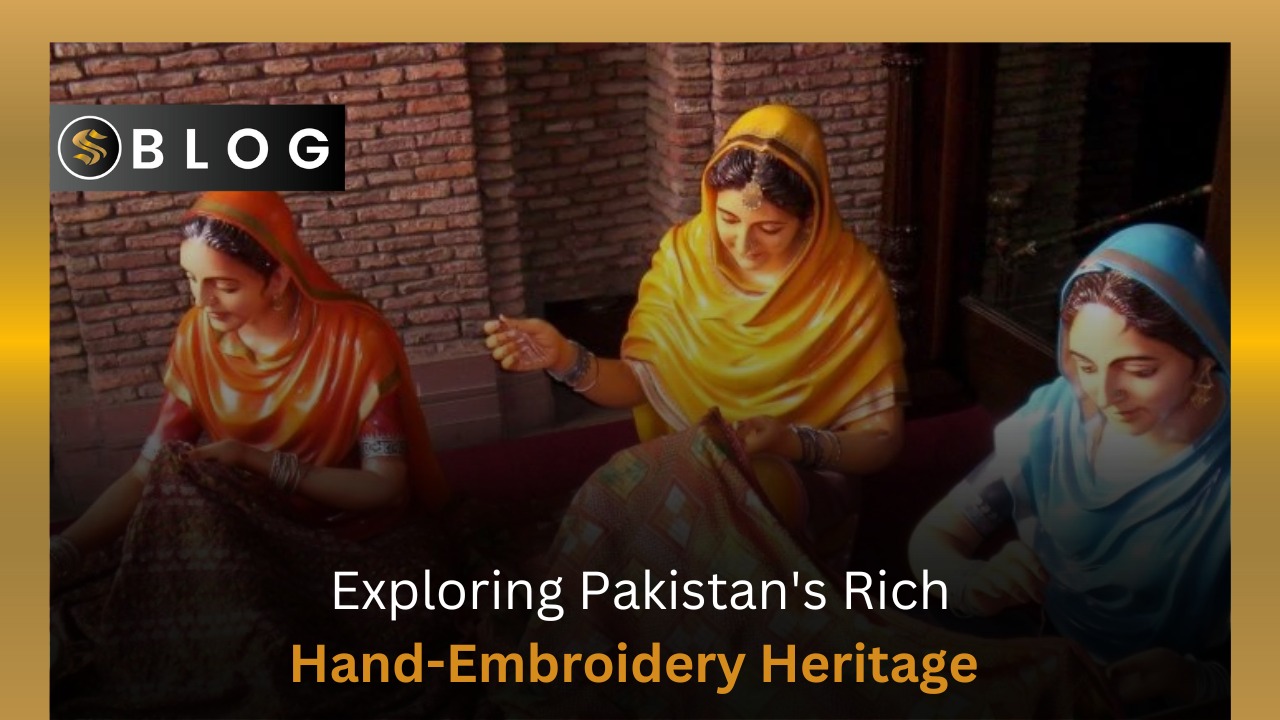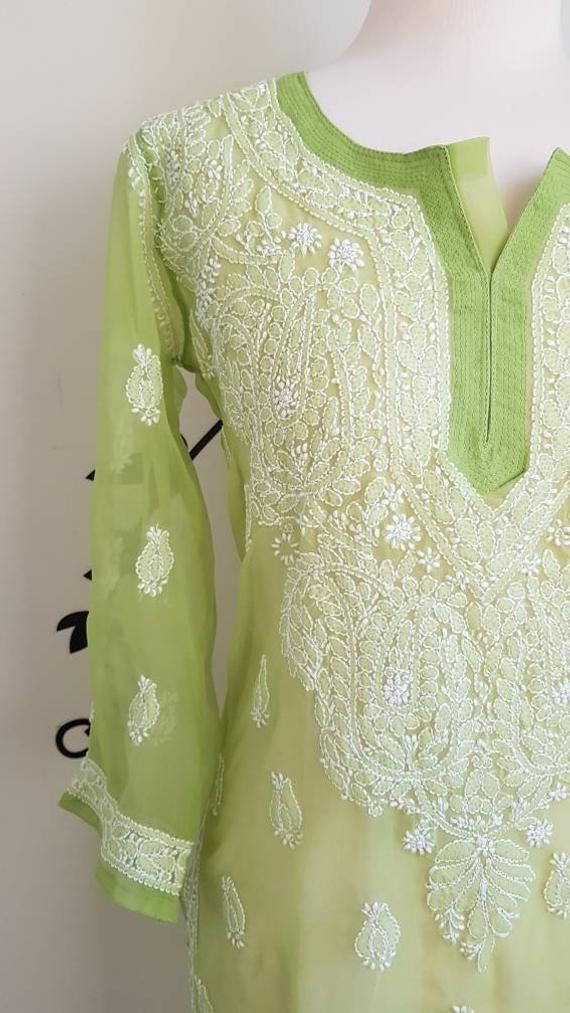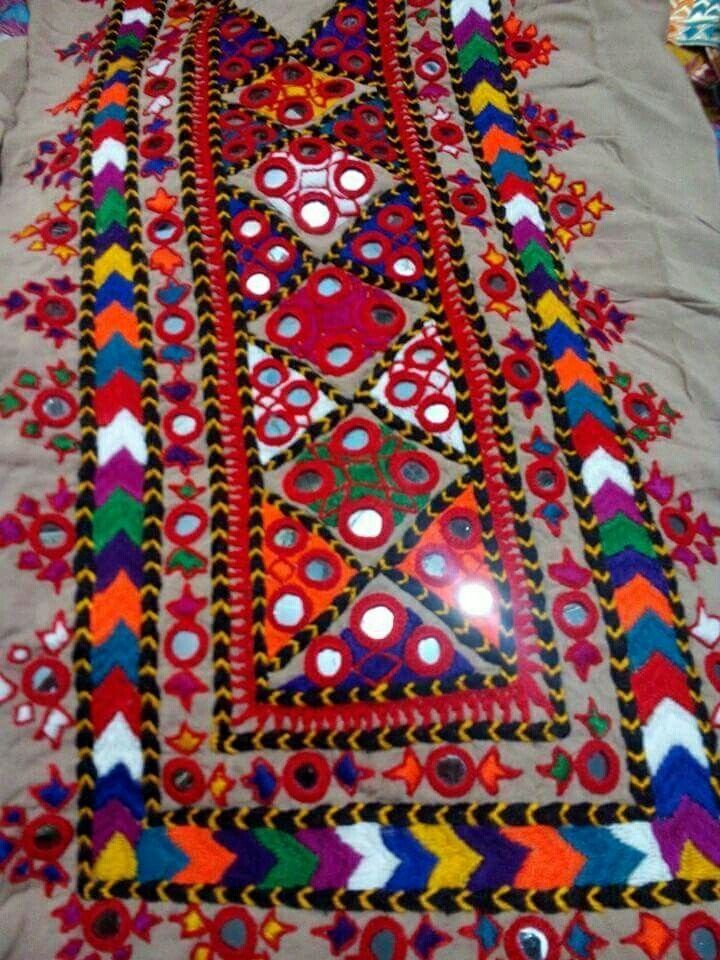
Share This Story, Choose Your Platform!
Pakistan’s Hand-Embroidery Crafts – Weaving Beauty and Creativity Stitch by Stitch
Hand-embroidery crafts are an integral part of Pakistan’s cultural heritage, and they reflect the country’s rich history and diverse cultural influences. From the intricate patterns of Chikankari to the detailed metal threadwork of Tarkashi, there are several hand-embroidery crafts that are unique to Pakistan.
In this blog, we will discuss five of the most popular hand-embroidery crafts of Pakistan in detail.
Chikankari
A traditional embroidery style that originated in Lucknow, India, was later introduced in Pakistan as well. The word Chikankari comes from the Persian word Chikan, which means embroidery. This embroidery style involves creating intricate patterns using white cotton thread on lightweight fabrics like muslin, cotton, and silk.

The motifs used in Chikankari are usually floral and geometric patterns, and the embroidery is done using a needle and thread. It is a time-consuming and intricate craft that requires great skill and attention to detail.
Tarkashi
An embroidery technique that is unique to Pakistan, involves creating intricate patterns using metal threads on fabrics like silk and velvet. The metal threads used in Tarkashi are made of silver, gold, or copper, and the embroidery is done using a needle and thread.

It is a highly skilled craft that requires precision and patience. The motifs used in Tarkashi are usually floral and geometric patterns, and the embroidery is done using a variety of stitches like satin, stem, and chain stitch.
Phulkari
Originated in the Punjab region of Pakistan and India, the word Phulkari means “flower work,” and the embroidery involves creating intricate floral patterns using silk or cotton threads on fabrics like cotton, silk, and muslin.

The embroidery is done using a needle and thread, and the motifs used in Phulkari are usually floral patterns in vibrant colors. Phulkari is a time-consuming and intricate craft that requires a keen eye and attention to detail.
Sindhi Embroidery
Sindhi embroidery is a traditional embroidery style that originated in the Sindh province of Pakistan. The embroidery involves creating complex patterns using silk or cotton threads on fabrics like cotton, silk, and muslin. The motifs used in Sindhi embroidery are usually floral and geometric patterns, and the embroidery is done using a needle and thread. The embroidery is characterized by its bright colors and bold designs.

Balochi Embroidery
It is a traditional embroidery style that is unique to the Balochistan province. The embroidery involves creating intertwine patterns using silk or cotton threads on fabrics like cotton, silk, and muslin. The motifs used in Balochi embroidery are usually geometric patterns, and the embroidery is done using a needle and thread. The embroidery is characterized by its vibrant colors and bold designs.

Mirror Work
Also known as Shisha embroidery, is a popular form of embellishment in Pakistan that involves attaching small pieces of mirrors to fabrics using colorful threads. The mirrors used in this embroidery technique are usually made of mica or plastic and are cut into different shapes and sizes to create intricate patterns.
Mirror work is commonly used on traditional Pakistani garments like shalwar kameez, dupattas, and saris. This embroidery technique adds a beautiful and reflective element to the fabric, and it is often used to create stunning designs that catch the light and shimmer in the sun. Mirror work is a highly skilled craft that requires great precision and attention to detail, and it is a true representation of the creativity and artistry of Pakistani culture.
Hand-embroidery crafts of Pakistan are a testament to the country’s rich cultural heritage and reflect the diverse cultural influences that have shaped its history.




